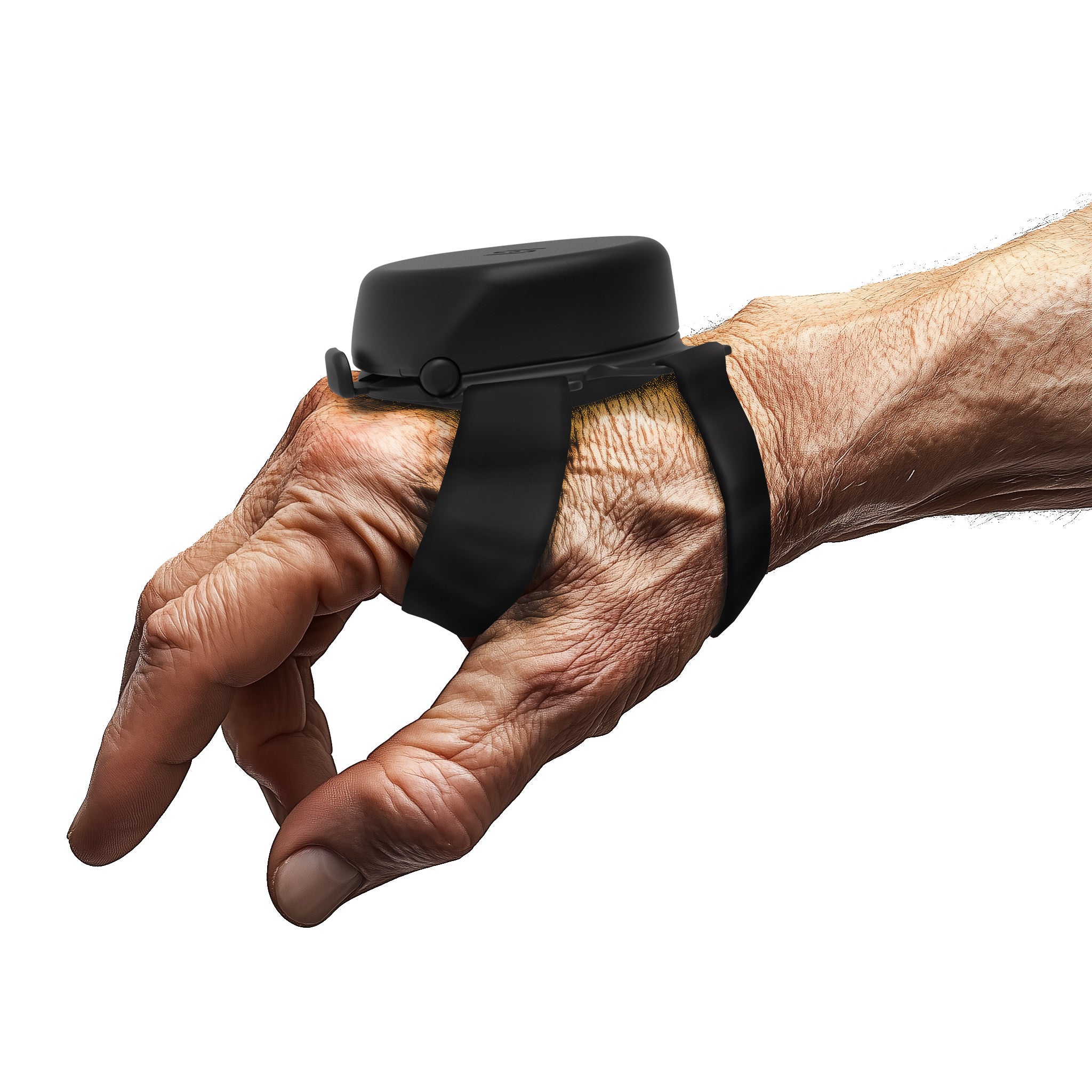Parkinson's Disease (PD) is a progressive neurological disorder that affects movement, balance, and coordination. While researchers search for new treatments, red light therapy for Parkinson’s has emerged as a non-invasive option that holds promise.
This blog discusses the potential of red light therapy for Parkinson's Disease: its mechanisms and current clinical trials. We will also highlight the best red light therapy for Parkinson’s while looking at the availability of light therapy devices designed specifically for PD patients.
Clinical Trials: What the Research Says
There is a growing interest among researchers in the power of red light therapy for Parkinson’s treatment, which has led to numerous clinical trials underway. Various parameters concerning this form of light therapy for Parkinson’s are being analyzed in these studies, such as its efficacy against certain symptoms and the best wavelengths or ways to deliver it.
-
Clinical Trials of White Light
White light therapy includes a broad spectrum of wavelengths, including red and near-infrared light. Researchers are exploring its potential to improve mood and cognitive function in people with Parkinson's disease. Participants have indicated improved mood stability and cognitive sharpness based on early reports about (light therapy for Parkinson’s).
-
Clinical Trials of NIR Light
Because of its capacity to penetrate far into the brain’s tissues, Near-Infrared Light (NIR) therapy has been the center of many clinical trials. The objective of these studies is to find out how to use red light therapy for Parkinson’s to support neurological health, with some demonstrating meaningful enhancements in motor skills and mental capabilities.
By penetrating through the skin, this treatment reaches the cell mitochondria, enhancing energy production while decreasing oxidative stress. Red light therapy for Parkinson's Disease presents a possible approach to managing the condition by protecting neurons, reducing inflammation, and enhancing neurogenesis — all crucial factors in managing Parkinson's Disease.
Key Ponts for Red Light Therapy:

Modern clinics are now offering the best red light therapy for Parkinson’s patients, combining clinical research insights and real-world results.
Benefits of Red Light Therapy for Parkinson's Disease
It offers several potential benefits for patients managing the disease. Here are some of the key advantages:
-
Treatment Options:
Red light therapy for Parkinson’s is a treatment that does not necessitate surgery or medicine, allowing people looking for alternative therapies to consider it. -
Symptom Management:
Parkinson's symptoms, such as tremors, stiffness, and slow movement, can be relieved by red light therapy for Parkinson's Disease. It has shown the capacity to enhance neural function and promote neuroprotection. -
Improved Mental Health:
Using red light therapy for Parkinson’s can help reduce anxiety and depression, which are common in patients with this condition. This is because it boosts the release of serotonin and other neurotransmitters that improve mood stability and emotional well-being.
Tips for Maximizing the Benefits of Red Light Therapy
If you wish to derive maximum benefits from your red light for Parkinson’s Disease, consider these helpful hints:
Consistency:Seeing results requires consistent use of the product. It's best if sessions are done daily or as directed by the healthcare professional. Consistent application of the best red light therapy for Parkinson’s has been shown to improve mitochondrial activity and reduce oxidative stress, supporting long-term symptom management.
-
Combine Therapies:
Amplify the impacts of red light therapy for Parkinson's Disease through the incorporation of various therapies like physiotherapy or pharmaceuticals that are backed by a healthcare professional. Many clinicians recommend pairing light therapy for Parkinson’s with physical therapy routines to enhance motor function and flexibility.
-
Monitor Progress:
Monitor your symptoms and any shifts that you observe throughout time. This can support you and your medical professional in modifying your course of treatment according to necessity. Patients using red light therapy for Parkinson’s often track progress through mobility and cognitive assessments, helping fine-tune their treatment frequency and exposure duration.
How to Choose the Best Red Light Therapy Device

Near-infrared (NIR) light therapy is being used for advanced Parkinson's treatment.
Depending on your analysis, the following are crucial aspects that must be considered during the selection of the best red light therapy for Parkinson’s:
-
Wavelength: Look for gadgets that combine red and near-infrared lights. Using both together makes them more effective at penetrating tissues deeply and providing measurable neurological benefits.
-
Device Type: Based on your preferences, you can opt for mobile devices, luminous sheets, or wearable hats and helmets intended particularly for brain disorders.
-
Customizability: The finest (red light therapy for Parkinson’s) gear allows you to fine-tune strength, duration, and frequency according to your unique conditions and recovery goals.
Selecting the appropriate device is critical when thinking about red light therapy for Parkinson’s. There are many options, from compact panels to full-body systems. Usually, the best red light therapy for Parkinson's Disease combines red and NIR light, offering adjustable settings and high-quality LEDs to ensure effective treatment. Neurological disorders are often targeted by wearable devices such as caps or helmets since they provide focused near-infrared light therapy applied directly to the brain.
Potentially Treatable Symptoms: How Light Therapy Can Help Parkinson's Patients
The treatment has exhibited promise for managing various symptoms associated with this disease. Below are some major areas where red light therapy for Parkinson’s can provide relief and enhance quality of life:
Sleep Disorders
Many people with Parkinson's Disease experience sleep disturbances that can worsen their symptoms. Red light therapy for Parkinson’s may help by boosting melatonin production, regulating sleep-wake cycles, improving sleep quality, and stabilizing circadian rhythms.
Depression
Another common symptom of Parkinson's Disease is depression. Research shows that red light therapy for Parkinson's Disease enhances mood by elevating serotonin levels in the brain, offering a natural, non-pharmaceutical alternative to traditional antidepressants.
Anxiety
Parkinson's Disease is commonly associated with anxiety, which can significantly impact quality of life. This therapy can help calm anxiety through its neuro-calming effect, thereby promoting overall mental health.
Fatigue
For numerous patients with Parkinson's Disease, chronic fatigue is a challenging symptom. Red light therapy for Parkinson’s helps increase cellular energy production (ATP), thereby reducing fatigue and promoting general well-being.
Motor Function
Motor function is one of the areas that Parkinson's Disease affects the most. Near-infrared light therapy for Parkinson’s has been shown to improve motor skills by enhancing neural communication and reducing muscle stiffness.
Steadiwear and Red Light Therapy: Complementary Approaches
For Parkinson's patients seeking to manage symptoms more effectively, combining red light therapy for Parkinson’s with innovative solutions like the Steadi-3 offers a powerful dual approach. The Steadi-3 is a wearable device designed to stabilize hand tremors, one of the most prominent symptoms of Parkinson's Disease.
By leveraging battery-free stabilizing technology, it provides real-time tremor reduction and complements the cellular benefits of red light therapy for Parkinson's Disease. Together, these therapies can help patients achieve improved motor skills, reduced anxiety, and enhanced daily comfort.
At Steadiwear, we advocate evidence-based solutions and ethical transparency, supporting therapies like red light therapy for Parkinson’s that empower patients to regain control, independence, and confidence in their everyday lives.
Conclusion: The Promise of Red Light Therapy for Parkinson’s in Neurological Care
To summarize, red light therapy for Parkinson’s is a fast-growing field in the management of neurological diseases, offering promising results for those exploring advanced non-invasive therapies. Research into red light therapy for Parkinson’s continues to evolve, providing patients with new ways to manage symptoms like insomnia, fatigue, and motor-function disorders.
The preliminary outcomes for red light therapy for Parkinson's Disease are encouraging, though further investigations are essential to confirm its long-term safety and efficacy. By understanding the correct wavelengths, exposure times, and treatment frequency, patients and healthcare providers can ensure responsible and effective use of light therapy for Parkinson’s.
Moreover, patients who combine the best red light therapy for Parkinson’s with assistive devices such as the Steadi-3 often report improved stability, mobility, and overall well-being. This integrated approach demonstrates how red light therapy for Parkinson’s can complement other therapeutic strategies, maximizing symptom relief and supporting healthier neurological function over time.
As science progresses, red light therapy for Parkinson’s stands as a symbol of innovation in neurorehabilitation, bridging cutting-edge technology, clinical research, and patient-centered care for a more empowered path toward symptom management.



